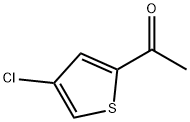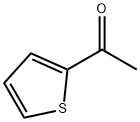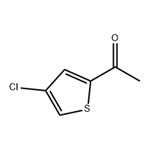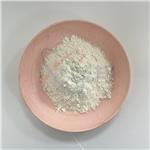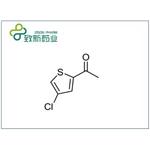Description
2-Acetyl-4-chlorothiophene is an oxychloride that belongs to the family of thiourea derivatives. It is synthesized by reacting phosphorus oxychloride with 2,3-dichloroacetophenone in a solvent such as dioxane or acetonitrile. The final product is purified by means of vacuum distillation and recrystallization from diethyl ether, hexane, and chlorinated hydrocarbons.
Reactions
Pd(OAc)2 catalysed the direct arylation of some functionalized halothiophene derivatives allowing the synthesis in only one step of polyfunctionalized arylated thiophenes. In the presence of 2-acetyl-4-chlorothiophene and various aryl bromides, the 5-arylation products were obtained in moderate to high yields employing only 0.5 mol% catalyst. Researchers studied the coupling of 2-acetyl-4-chlorothiophene with several aryl bromides employing 0.5 mol% Pd(OAc)2 as the catalyst and KOAc as the base. These phosphine-free catalyst reaction conditions allowed the successful coupling of several aryl bromides to more simple thiophene derivatives. Using such conditions, the 5-arylated thiophenes were obtained with high isolated yields. With this procedure, the priority for the arylation of this 2,4-disubstituted thiophene is the 5-position. Moreover, no formation of by-products, such as thiophene oligomers, due to the oxidative addition of this chlorothiophene to palladium was detected during these reactions[1].

References
[1] Kassem Beydoun, Henri Doucet. “Palladium-catalyzed direct 5-arylation of formyl- or acetyl-halothiophene derivatives.” Journal of Organometallic Chemistry 696 9 (2011): Pages 1749-1759.
